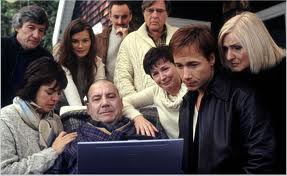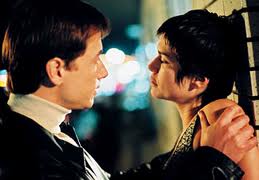Brother Bear is an animated Disney movie released in 2003. It is part of Disney’s post-Renaissance phase from about 1997 to 2008, a period of films marked by experimentation with the Disney Renaissance formula, most noticeably a move away from European fairy tales and the “Broadway musical” format. During this era, Disney sought out a broader base of source material and inspiration, drawing from novels, non-European fairy tales, Japanese animation, and genres such as sci-fi and action/adventure, and diversifying their casts of characters. Brother Bear is very much in this experimental style. Deciding to set their story in prehistoric Stone-Age Alaska/Canada/some northern part of North America, and drawing upon the folklore of what would be their distant descendants (Inuits), there is not a single main character who is racialized as white aside from two comic relief moose. Most notably, it is one of the very few Disney movies to have neither a villain nor any kind of love interest or romantic subplot (Inside Out is another). That’s not to say that the movie is boring by any means — the story is one of the most dramatic, featuring major character death and near-fratricide. The emotional core of the movie is platonic love, including the motivations of the movie’s main antagonist.
It also helps that the main character, Kenai, is highly unsympathetic (he starts out as an immature daredevil with fairly toxic notions of masculinity) and most of the movie is focused on his personal growth. He commits a crime that so offends Nature (the “Great Spirits”) that he ends up being cursed with the body of a bear. His one saving grace, however, and a major motif of this movie, is that he would do anything for his brothers.
In the advertising of this film, the filmmakers had multiple choices about how to pitch this story, and I think they settled on a “fun, family-friendly romp about understanding what’s really important in life” playing up Kenai’s bear form, Koda (the precocious bear cub who adopts Kenai and goes on a Character Growth Road Trip with him), and the comic relief moose as the main characters. That’s arguably a reasonable way to interpret the core of this film, but ultimately I think it’s plainly incorrect. The emotional core of this movie (to me) is three brothers whose love for each other transcends life, death, distance, and form. To leave Denahi out of publicity materials — as was repeatedly done with this movie — even though he is narrator, antagonist, and has one of the most moving emotional arcs in the film, is to misunderstand or misrepresent what this film is.

What Brother Bear says it’s about: talking animals. What Brother Bear is actually about: Human characters never depicted in publicity materials; gratuitous shots of Alaskan wilderness
Motifs
This movie is littered with recurring motifs that create a cohesive arc from start to finish. The first is the question of man vs. monster. This theme is one that was earlier explored in The Hunchback of Notre Dame, where Quasimodo and Frollo are foils that represent ostensible monstrosity but inner humanity (Quasimodo) or its opposite, ostensible humanity and inner monstrosity (Frollo). The same goes for Beast and Gaston in Beauty and the Beast.
Here, however, the motif is overloaded in multiple ways. In addition to contrasting with “monster”, the “man” part of the dichotomy also contrasts with “boy” and portrays this story as a straightforward coming-of-age story for Kenai. The “monster” part of the dichotomy contrasts with “man” in two ways: the bear as a monster in the frightening world where a run-in with Nature can leave you dead (man vs. monster as a man vs. nature conflict), and the inner monster that describes the ways in which humans fail to embody humanity. Kenai shifts through man, bear, and monster identities throughout the movie, although it’s only at the end that he has the maturity to truly see the identities for what they are.
This thematic motif is given visual form with the repeated image of the human handprint and the bear pawprint overlaid on top. The human handprint is a symbol in Kenai’s culture of having attained manhood (as opposed to boyhood); the awe of Stone Age cave paintings including the handprint and the depiction of a man vs. bear hunt (a beautiful moment in the movie) is itself a testament to the achievements of man (as opposed to nature). Throughout the movie, however, Kenai is confronted with the image of his own pawprint that he leaves behind that shuts him out of both kinds of manhood (adulthood and personhood). Also, I should note that the image of linked hands is a symbol of both humanity but also fraternity (familial love) — this echoes what was done with hands pressed together in Tarzan.
That brings us to another motif: sibling love. In particular, there are many brother relationships in this film, where, on the surface, the brothers are obnoxious and irritating to each other, but also at the end of the day willing to go to the ends of the earth for each other. This dynamic is present throughout the opening scene in very subtle, unremarked-upon ways, where Kenai gets on his brothers’ nerves (particularly middle brother Denahi), but is also constantly being rescued by them, even at great risk to themselves. This dynamic of combined irritation and devotion recurs throughout the film.
Finally, there is the motif of “seeing through another’s eyes.” This phrase appears in the lyrics of a song, and is also visually represented via a gimmick in the format of the film itself, where the film changes its aspect ratio and color palette about one-third of the way through, after Kenai wakes up as a bear. Literally, the world looks different to him (and to the viewer) after he has been transformed. It is also significant that Kenai’s transformation not only turns him into a bear (and gives him a chance to see his own actions through the eyes of other creatures) but also forces him into the role of an older brother, a role that requires maturity from him and also helps him understand his older brother better.
Music
Brother Bear‘s soundtrack is an attempt to partially escape the musical format of 90s Disney movies. It has original songs with lyrics, but they are for the most part sung by various musicians who serve as a narrator, rather than by the characters within the film. The composer and lyricist here is Phil Collins, whose lyrics are very different from the Broadway musical style of the Disney Renaissance lyricists like Howard Ashman, Tim Rice, or Steven Schwartz. If you’re looking for clever wordplay like “As a specimen, yes I’m intimidating” or rhyming “Adonis” with “croissant is”… this movie doesn’t have that. It instead has lyrics that sound like the immediate thoughts of the characters whose mind they’re meant to give voice to, very often monosyllabically and with meter, but often no rhyme (example: “This has to be the most beautiful, the most peaceful, place I’ve ever been to. It’s nothing like I’ve ever seen before.”).
Phil Collins’s songwriting and lyrics are extremely polarizing. At one end, Phil Collins is considered basically a talentless songwriter with a grating voice and musical style and painfully basic lyrics. At the other, his voice is considered unique and his songs catchy or even powerful. I’m more at the second end — I think his songs work for this movie, with the instrumental pieces building up dramatic moments, and his lyrics delivering raw emotional punch in the form of someone directly expressing their feelings. And even someone who hates the sound of Phil Collins’s voice will be spared some pain — half of the songs are not sung by him, which gives the movie more vocal variety than Phil Collins’s previous collaboration with Disney, Tarzan.
Caveats
As much as I love Brother Bear, it is a film that I have difficulty recommending without disclaimers. The first disclaimer (mentioned earlier) is the comic relief moose. This movie objectively would have been better without them. They add nothing to the movie aside from padding some scenes. There was a weak rationale for their continued existence in the movie (apparently, the makers debated back and forth for a really long time whether to keep them in) in that they are brothers and fit the whole “brothers” dynamic that keeps recurring throughout the film, and come in at a key moment in the film to remind Koda of what it means to be brothers. It’s… very weak, though, and I think the movie would be more economical and much stronger without them.
The second disclaimer is that this movie leans pretty heavily into a New Age aesthetic. The focus on Native American spirituality, the heavy-handed moralizing about how important it is to See Through Other People’s Eyes, including the fact that animals have the same moral worth as human beings (just don’t think about all the fish that the bears murder…) can be very grating.
Still, overall, as long as you’re capable of mentally erasing the moose from this film through sheer willpower, I think Brother Bear is a forgotten movie that’s worth a second look. It’s a movie from a period of time when Disney was actually doing some interesting experimentation, and overall the movie provides some great moments that are rare in Disney movies before or since.

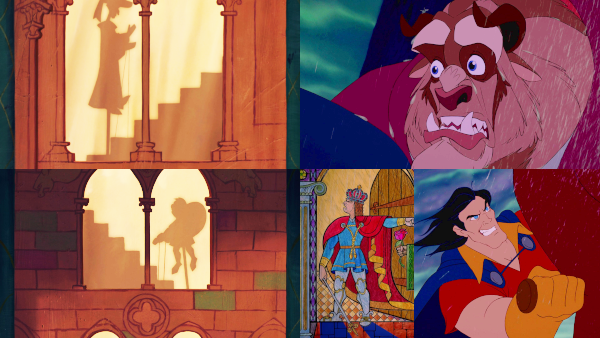
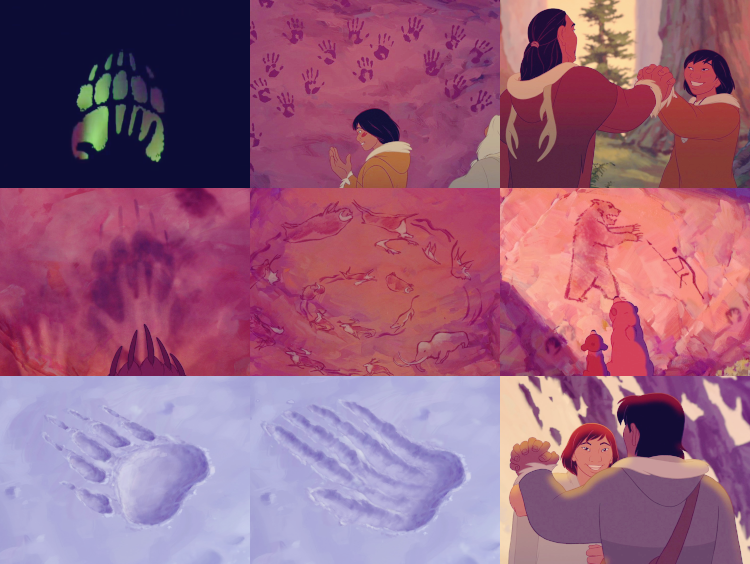
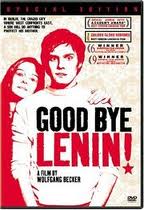
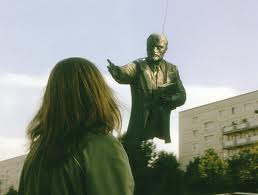
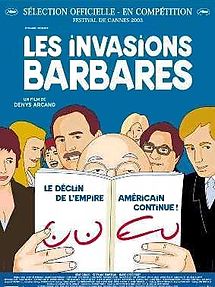 Director Denys Arcand, who made
Director Denys Arcand, who made 